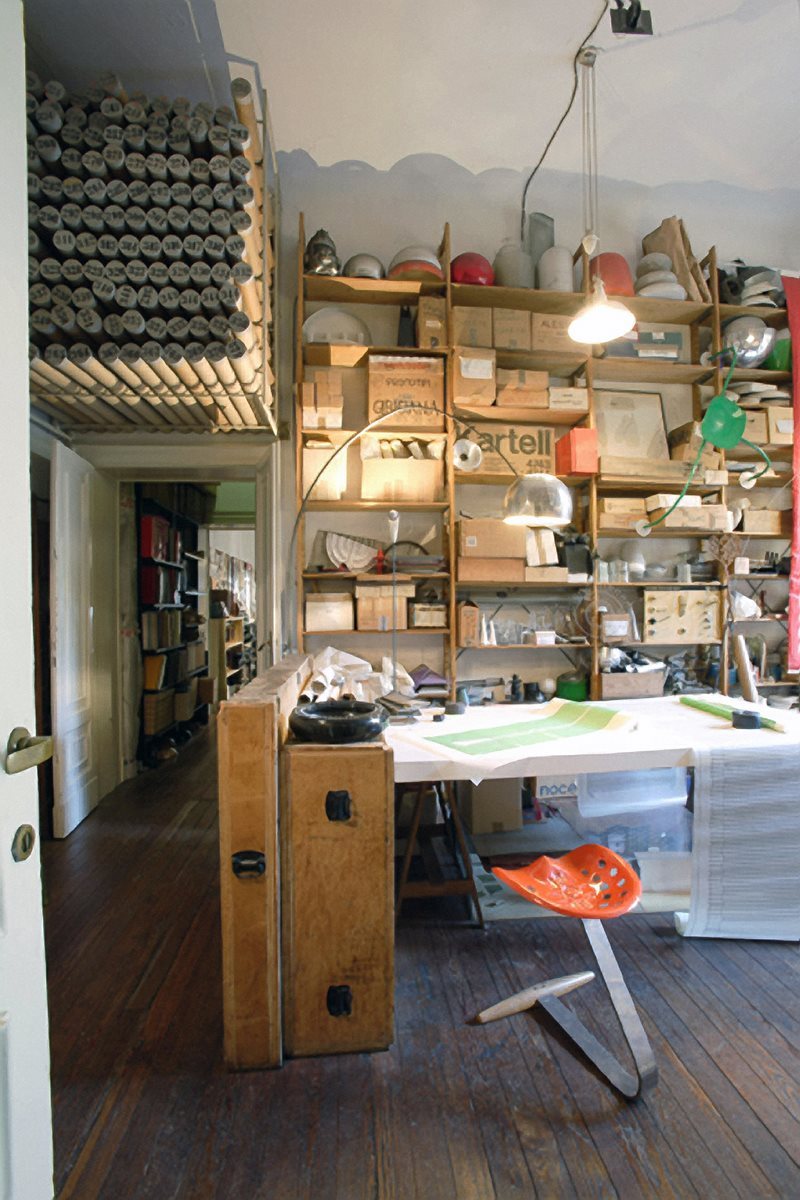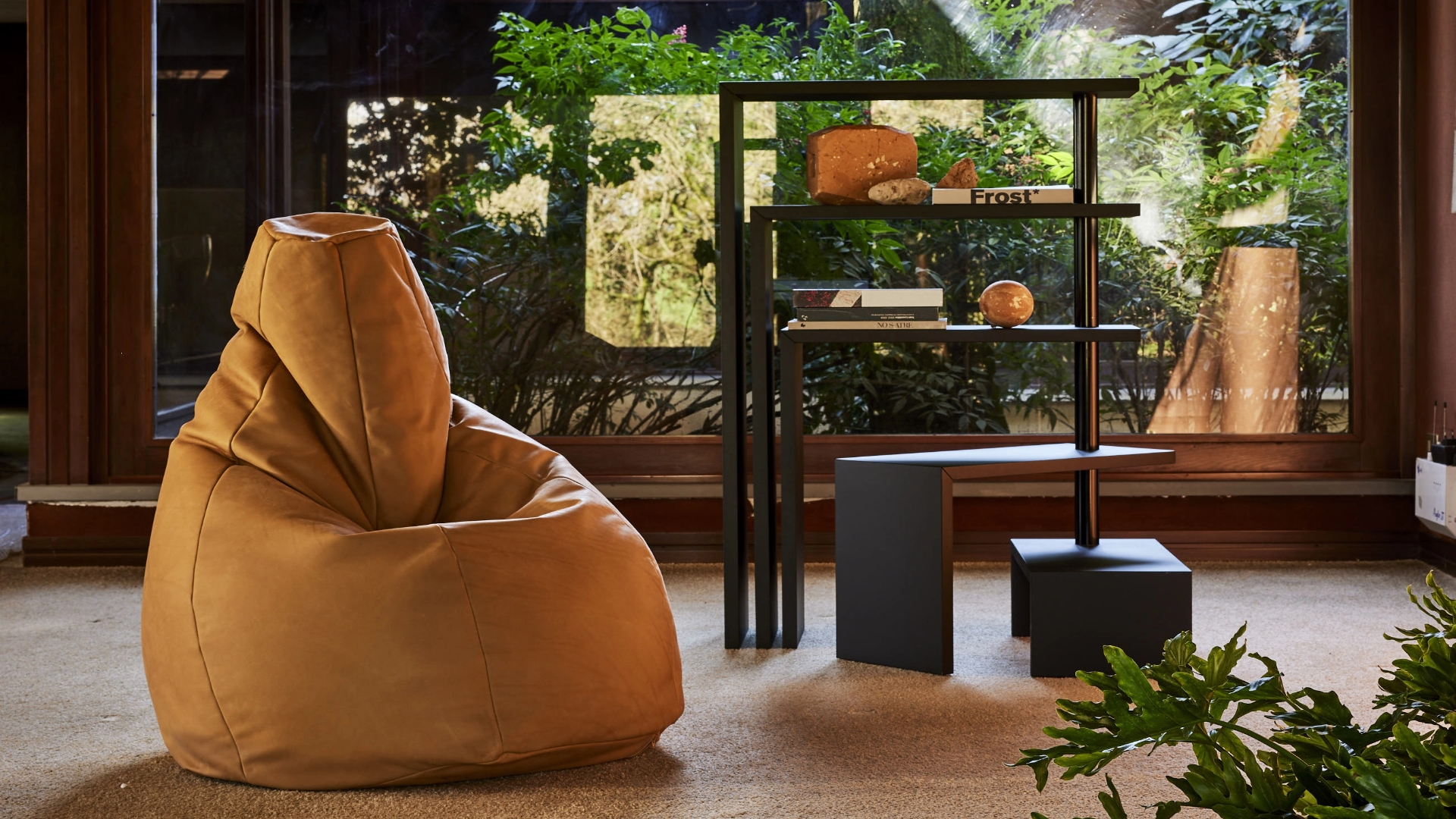A visit to a magical place: Achille Castiglioni's Studio-Museum, where extraordinary sign of Italian design are kept and displayed
Piazza Castello 27 in the heart of 19th-Century Milan. This monumental building is home to Achille Castiglioni’s Studio, and now also to a museum dedicated to an international design collection. Thanks to contributions from the Triennial, it is open to the public for guided tour (www.fondazioneachillecastiglioni.it and www.triennale.it).
There are 5 rooms filled with sketches, posters, designs, objects, books, prototypes and magazines on which Mrs. Irma Castiglioni, daughter Giovanna and 2 historic assistants of the Studio tirelessly work to complete the long, precious work of organizing archives involving projects from over a half a century. They are assisted by a full-time team from the Triennial dedicated to the project, Achille’s friends and colleagues and the companies for which the untiring architect-designer worked over the years.
It is here in this Studio that Achille Castiglioni (1918 -2002) created the designs for the settings, furniture and objects that gave life to an era and to many of our interiors. He and brothers Livio (1911-1979) and Pier Giacomo (1913-1968) did so by experimenting intuitions and findings on the industrial product with genius irony.
This patrimony is illustrated in detail everyday to visitors, including anecdotes filled with the energy and creative inspiration that gave life to contemporary design icons. Many of these were branded Zanotta: the Basello coffee table, which Castiglioni then developed into the Joy bookcase, the Marcel Duchamp style Mezzadro stool from a tractor seat and Sella, the equilibrist with a single leg and bicycle saddle. Here and there are chandeliers, radiograms and pieces of cutlery … «Do you see that kneeling-stool? Achille designed it for me because I was always crouched down on my knees while sitting at the desk. And that lamp with a “cap” was also created by a practical need tied to our lives. I always loved reading until late in the night but Achille wanted to sleep so he could get up early in the morning to go to his beloved studio…». As she tells these stories, Mrs. Irma points out natural leather seat Primate that Zanotta has been manufacturing since 1970 and lamp “Gibigiana” by Flos. There are traces of these marvellous objects in the adjacent room: a hockey shin-guard with leather ribbing on which Castiglioni modelled Primate. And there are hundreds of vases, cylinders and glass test tubes that inspired him to design lighting pieces. And let’s not forget the copper, porcelain and cast iron sweets moulds and the thousands of Allen screws, files and steel pipes.
There are also numbered “files” full of notes and sketches and a tall showcase containing the “Dadaistic” collection of anonymous, beloved objects trouvés collected from around the world and kept for teaching (over 20 years at the Politecnico in Milan and Turin). The Master had fun in this alchemist’s combination of a breeding ground, artisan’s studio and research laboratory.
Achille Castiglioni’s studio-museum is this and much more. It is an atmosphere, a world and a collection that wouldn’t make sense anywhere else. «This is why it is fundamental that the space continues living and generating ideas, encounters and exchanges,» says Irma. «The creative potential and stimulating atmosphere of these areas, bookcases, desks and drafting machines full of work and testimonials can be very useful to those studying, designing, planning or writing. I fondly remember the round table on the “analogies” magazine Domus organised here 2 years ago. For hours, 12 men and women from the world of international design sat around Achille’s large work table (Zanotta’s Bramante designed with brother Pier Giacomo in 1950 and lit by their sculptor father’s maxi hanging theatre lamp). That day, many very interesting ideas and suggestions were put forward, which will certainly be contagious… to continue relating project, research and cutting edge. And enthusiastic zeal, friendship and cultural exchange. These things were all common to both Achille and Aurelio Zanotta. And without which neither Sella, Mezzadro nor Joy would have ever been created». Nor would this energy and passion have been passed down to so many young, aspiring designers, graphic designers, architects and artists.
(article taken from the online magazine Zanotta Happenings, 2008)
(the product Bramante mentioned in this article has been discontinued)

